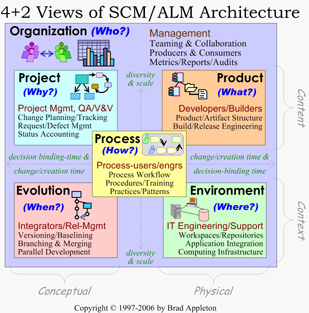For those of us who haven't read Thomas Friedman's The World is Flat, here are a few resources to familiarize yourself with the basic gist of the material in short-order time:
- Why The World is Flat (with a short+sweet synopsis of the 10 great 'levelers'), by Dan Pink
- Wikipedia's entry on "The World Is Flat'
- It's a Flat World, After All, by the author
- An NPR Interview with author Thomas Friedman
I think the book is, in part, saying that mass availability of technologies like the internet and Wireless connectivity, have provided us with the "inverse" of teleportation. The mass availability and accessibility of the internet and its pervasiveness into the everyday life of businesses and individuals is essentially the virtual inverse of teleportation: instead of being able to send ourselves anywhere, instantly, we have the ability to virtually summon anything from anywhere to wherever we are!
Okay, so we've only be able to do that digitally, with the mass commoditization of the internet and wireless technologies. We can do it with information and data, but not physical objects. But we can still connect with people anywhere instantly!
In terms of business, the world is "flat", but in terms of technology, we're basically saying The World is now 5-Dimensional!
The traditional 4 dimensions are the three spatial dimensions (height/length, width, depth) , and time. Friedman is saying that these "flatteners" have occured. Of course the world isnt really flat (we know it's round), but what I perceive him to be saying is that a new "dimension" has emerged that now allows us to come pretty darn close to bypassing the traditional constraints of time and space.
This 5th dimension is technology plus mass accessibility! Each of the "flatteners" Friedman describes is a form of technology that allows information, communication, and collaboration to transcend the traditonal time-and-space boundaries of the physical world. And the internet (the "virtual world") is a big part of that 5th dimension. But we did't make it to that 5th dimension right away. It wasnt until everyone and their mother in this country, and all the other countries we economically compete and partner with, had access to that technology (and used it!)
Friedman calls this Globalization 3.0. Whereas Globalization 2.0 was centered around business, the increased pervasiveness of the internet into daily lives and gadgets gas created Globalization 3.0, which centers around individuals. I wonder if globalization 4.0 might be achieved when we finally perfect virtual teleportation and have the ability to project our own virtual presence (not just a "holographic image" but many of our our five senses) to interact with that of others. (That sounds a little too much like the Matrix for my taste.)
Here some interesting reviews and commentary on Friedman's book:
- Why Bill Gates beleives the World is Flat
- Wake up and face the flat earth!, an interview with the author by Yale Global Online
- The Great Leveling, a review by Warren Bass of the Washington Post
- The Polarised World of Globalisation (A Response to Friedman’s Flat Earth Hypothesis)
- Gloablization is Great, Sort of, a review from BusinessWeek online
- The World is Clustered, a review by Lisa Haneberg, of the Management Craft blog
- A review on IBM DeveloperWorks from an IT-perspective
- End of the Line : The Rise and Coming Fall of the Global Corporation, by Barry C. Lynn
- Three Billion New Capitalists: The Great Shift of Wealth and Power to the East, by Clyde Prestowitz
- Extreme Competition: Innovation And the Great 21st Century Business Reformation, by Peter Fingar
- The Only Sustainable Edge: Why Business Strategy Depends on Productive Friction and Dynamic Specialization, by Hagel and John Seeley Brown (also see the Edge Perspective's blog)
- Whole New Mind, by Dan Pink (also see Dan Pink's blog)


